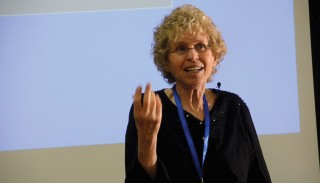Column Name
Title

This summer, I had the honor of addressing an Interfaith and Intercultural Conference in Nairobi, Kenya. The conference, co-sponsored by Columbia University’s Global Center for Africa and the Maryknoll Society, brought together about 20 teachers from all over Kenya in an effort to combat terrorist activities within that nation. It was unlike any conference I had ever attended, and it proved to be challenging and eye-opening. The participants included clergy from Catholic, Muslim, and traditional African religions; everyone agreed that they needed to provide attractive options to young people with an ultimate goal of creating an interfaith curriculum for Kenyan schools.
Body
It’s entirely different to meet people who deal with violence and death every day instead of reading about it in the paper. Perhaps most moving was to hear from three Maryknoll nuns who went into the most violent areas and got people to talk to each other. Three men who had attended their peace meetings came to Nairobi from badly affected Tana Delta. One sat next to another whose tribe had murdered 10 members of his family. Forgiveness is not a simple matter in such a case. But they both testified to the peaceful meeting arranged by the sisters. I was moved and humbled.
My presentation showed how Islam and Christianity came together in Venice during the Renaissance, but it wasn’t relevant enough for this audience, which urgently needs to reach young people before Al Shabaab and ISIS recruit them. In fact, the participants agreed that the heinous crimes of these terrorist organizations have nothing to do with religion. Rather, the well-funded groups resemble the Mafia in that they use money and sophisticated methods to brainwash Kenyan youth and enlist them in murderous activities. Like youth everywhere, Kenyan young people spend hours a day on the Internet; poverty is rampant. Jihadist rap songs and social media urge young people to arm themselves and kill.
While I lost my audience with my Venice slides, they responded enthusiastically to the story of William Harvey (’02, composition; MM ’06, violin), who was one of the Juilliard students who went to the 69th Regiment Armory after the September 11 attacks and performed there for hours while families waited for news of missing loved ones. Afterward, he defied odds and set up Cultures in Harmony, a nonprofit that promotes cultural understanding through music. Ten years later, it’s expanded beyond Afghanistan into 13 countries. I also told them about how Juilliard outreach programs combat ignorance and poverty. Although the road to peace is long and treacherous, conferences and programs like these provide opportunities for hope.




